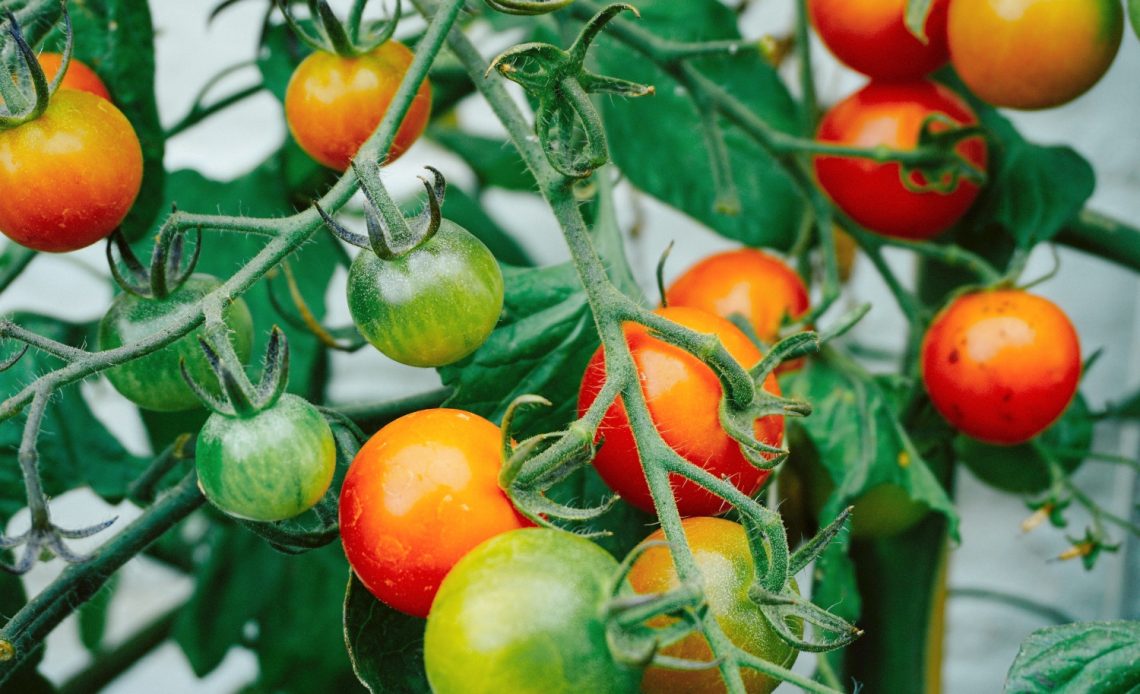

We’re here to help! Wild Yards is a completely free website that is 100% dedicated to helping you create a wildlife-friendly, sustainable yard. Read more
WildYards is reader-supported. When you buy a product through a link on our site, we may earn a comission. Every product is independently selected by our (obsessive) editors and our reviews are unbiased and objective. Read more about our mission or our privacy policy.
A hungry deer, especially a young one, will nibble on just about anything. Even plants like peonies and ferns that are considered to be deer-resistant are never completely safe. And while the ornamental plants in your landscaping, like lilacs, can certainly fall prey to these pesky foragers, the fruits and vegetables in your garden are especially at risk. Deer love to munch on pumpkins, asparagus, and okra, and they can do significant damage in a short amount of time. But do deer eat tomatoes, too?
Yes, deer eat tomatoes, from the leaves, stems, and flower buds to the juicy ripe fruits. If deer have been eating your tomato plants, you can protect them with foul-smelling sprays, fencing, and motion-activated sprinklers.
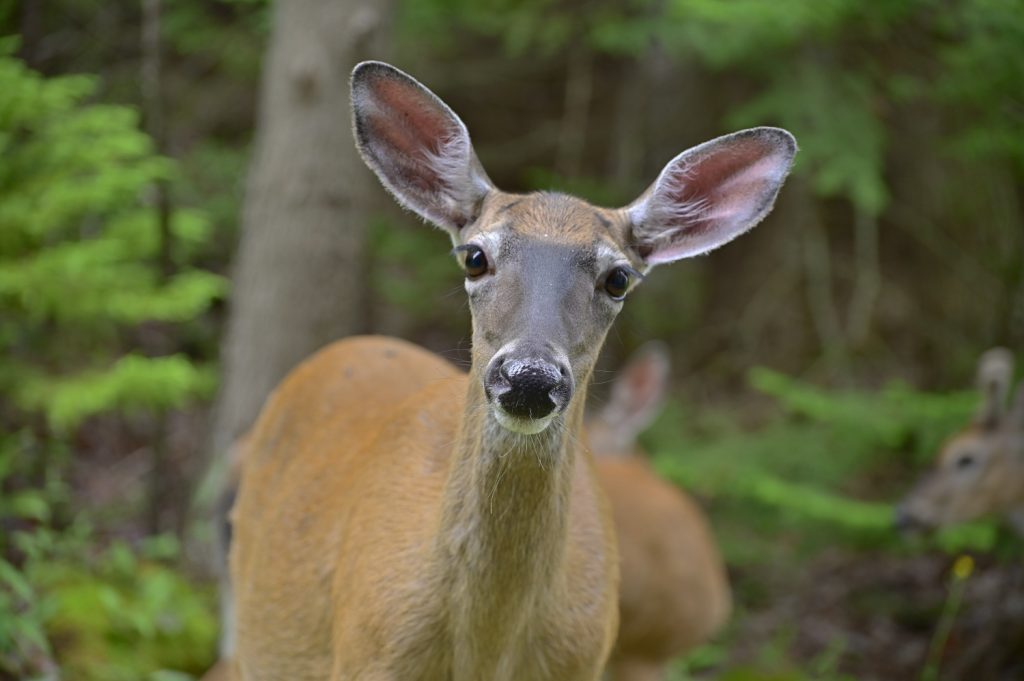
Why do deer eat tomatoes?
What deer eat comes down to two things: what tastes good, and what’s available. Deer are herbivorous animals (although they have been known to eat meat on occasion). But unlike cows and horses, who rely mostly on grasses, deer consume a variety of plants to stay healthy. Deer will almost always choose to eat the plants that taste best to them. And what tastes good largely depends on an individual deer’s nutritional needs.
Of course, sometimes, what tastes good to a deer isn’t available. During droughts or periods of overgrazing, deer are forced to sample the plants that they wouldn’t touch under normal circumstances. This is when those so-called “deer-resistant” plants growing in your garden are most likely to come under fire.
So, why do deer eat tomatoes? Well, for some deer, it’s because they like the taste. Tomatoes are highly nutritious. They’re an excellent source of vitamins A, C, and E, which are essential for skin, hair, and eye health. And because tomatoes are 94% water, they can help deer stay hydrated during the heat of summer. Tomatoes may not be popular with every herd, but for most deer, they’re hard to resist.
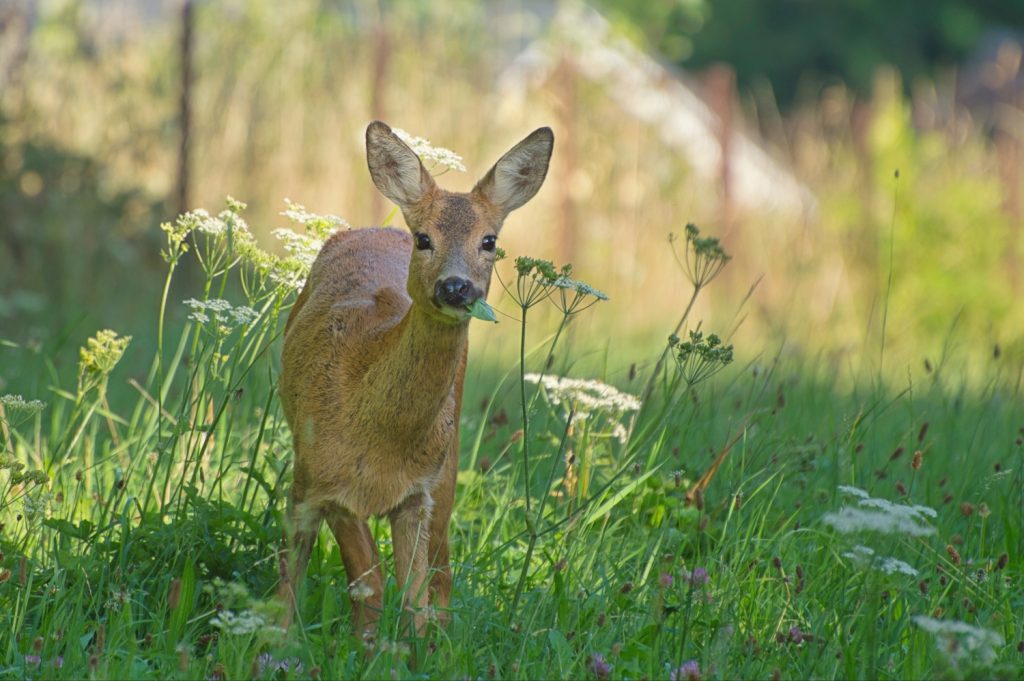
How can you tell if deer are eating your tomatoes?
Much as deer love tomatoes, they’re not the only foragers that eat them. Rabbits, birds, and squirrels have also been known to eat tomatoes — the plants and the fruits alike. Since so many different animals like to snack on tomatoes, how can you be sure that deer are the true culprits?
Start by examining the plants. Where do you see the most damage? If you find broken leaves and stripped stems at the base of the plants, then you can place the blame on rabbits. They love to sit in one spot and nibble on vegetation, and they’re particularly fond of tall plants, like tomatoes, which offer them protection from nearby predators so they can eat in safety.
If your tomato plants are missing flower buds here and there, and if you see tomatoes that are still attached to the vine, but have clearly been chewed, squirrels and birds are probably responsible. These critters love the protein-rich pollen flowers have to offer. They also enjoy picking through the tomato’s juicy innards.
But if your tomato plants have been eaten from the top down, you have a deer problem. Deer are the only animals tall enough to reach the top of the tomato plants. They love to nibble on tender seedlings and small fruits, especially cherry tomatoes. Look around for deer tracks in the soil, and deer scat, which are piles of small, round pellets. These are sure signs that deer have been making a meal of your tomato plants.
What can you do to keep deer away from your tomato plants?
Once you’ve determined that your neighborhood deer are responsible for the damage to your garden, it’s time to take action. Deer are much more clever and persistent than we give them credit for. So, for best results, employ a variety of tactics to keep them out of your vegetable patch. Switching things up regularly will keep them on their toes.
Bar soap
Interestingly enough, deer hate the smell of Irish Spring soap. Use a cheese grater to apply Irish Spring shavings to your tomato plants and the surrounding area. You don’t have to go overboard with it. A thin layer of shavings will do, although you may need to add fresh shavings after rain.
If you’d rather keep soap off of your crops and out of the soil in your garden, then try hanging bars of Irish Spring around your tomato plants, instead. Slip a few bars of soap into some pantyhose and nail the stockings to stakes near your plants. A few whiffs of the soap should be enough to send hungry deer packing.

Dish soap repellent spray
If you haven’t got any Irish Spring on hand and you need something to repel the deer fast, mix up some homemade dish soap deer repellent. You can use any dish soap for this recipe, but Dawn works best. Pour 4 cups of water into a spray bottle and top it off with 2 tablespoons of dish soap. You can add other foul-smelling ingredients, too, like garlic juice, vinegar, or mayonnaise.
Apply this mixture to your tomato plants liberally, and, as with the Irish Spring, be sure to reapply it after a rain. Deer dislike the taste of Dawn (who can blame them?), and they especially hate the slippery sensation of the soap on their tongues. A taste or two of this stuff will convince them to leave your tomatoes alone.

Companion planting
Another strategy for keeping deer out of the garden is companion planting. Growing deer favorites near plants that deer are known to hate is a simple way to protect your vegetables. Try growing garlic, onions, and chives near your tomato plants. Deer can’t stand the overpowering smell of these sulfur-rich veggies, so keeping them in between rows of your tomatoes is a great way to repel them.
Deer also aren’t too fond of herbs. Basil, for instance, has a powerful fragrance that most deer find offensive. Planting basil near your tomatoes has a few other advantages, too. Not only does basil improve tomato flavor, but it also attracts pollinators, significantly boosting crop yield.
Motion-activated sprinklers
Deer are prey animals, operating with a “fight or flight” mindset. They prefer to search for food in calm environments, where nobody makes any sudden movements, and there are no loud, unmellow noises. If your garden is nice and peaceful, chances are, it’s going to be a hotbed of deer activity.
Deer-repelling sprinklers can turn your relaxing vegetable patch into an unsettling nightmare for deer. And, because these sprinklers are motion-activated, deer will never be able to figure them out. Though motion-activated sprinklers are one of the more expensive solutions to your deer problem, they’re also one of the most effective.
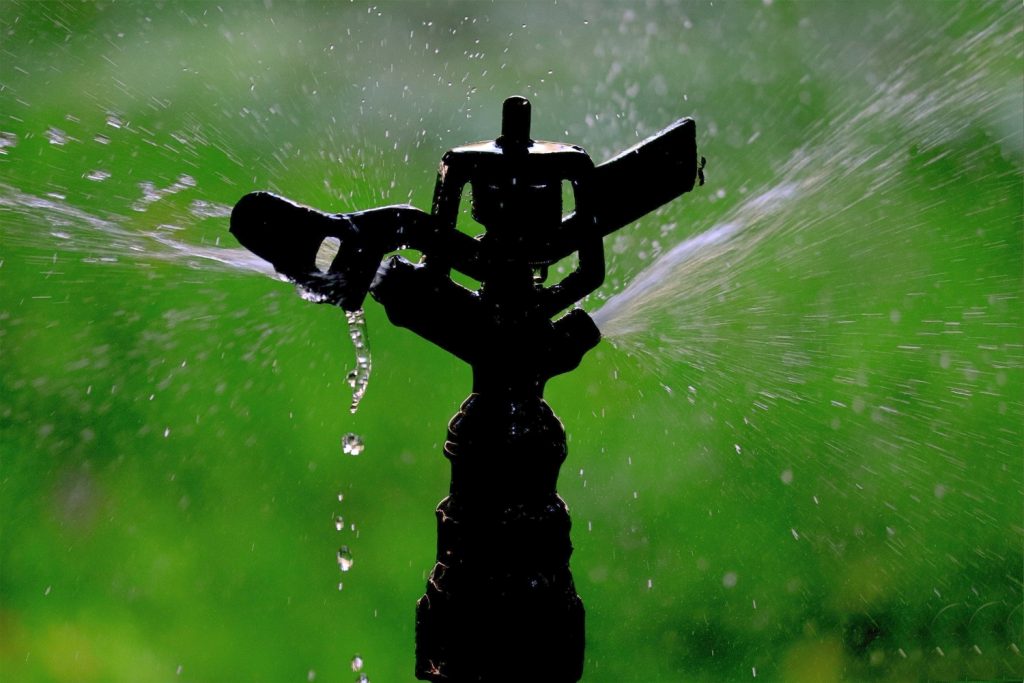
Predator calls
Deer don’t like to hang out where they think potential predators may be lurking. If they hear predator calls coming from your tomato crops, they’ll hightail it out of there. So consider investing in a predator call speaker that will emit various cries from coyotes, wolves, and other deer predators.
You can also play predator calls on your phone whenever you visit your garden. Pull up a few predator call videos on YouTube and place your phone speaker side down in a bowl to help project the sounds. This strategy is effective not just for repelling deer, but for repelling rabbits and squirrels as well.
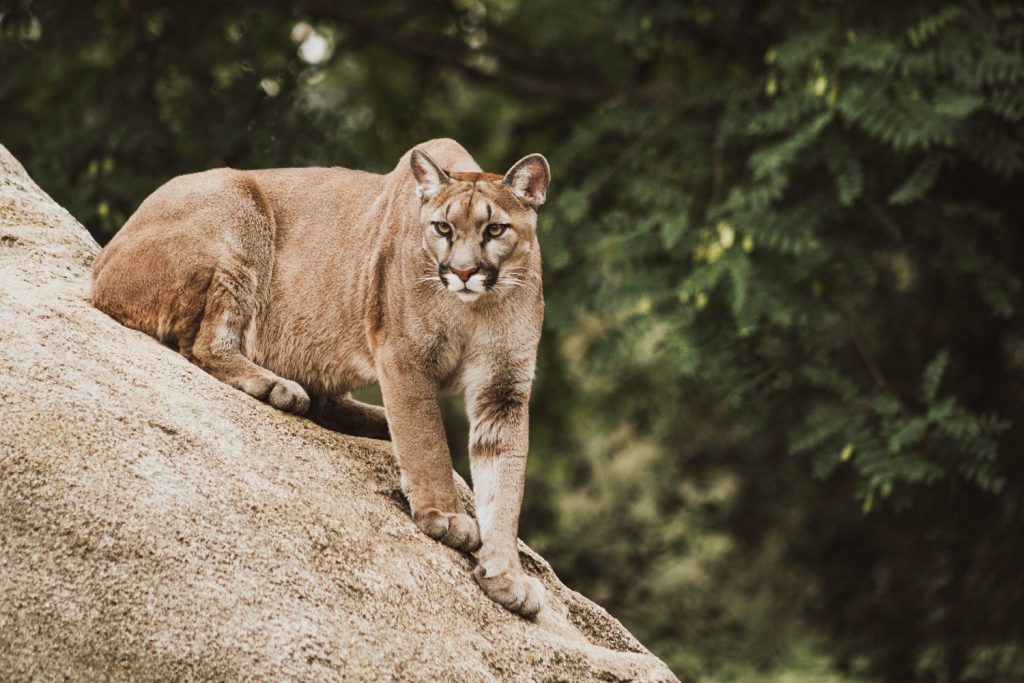
Ultrasonics
Similar to predator calls, ultrasonic speakers are designed to emit sounds that repel deer. However, instead of issuing predator cries, ultrasonic devices let out a high-frequency noise that only deer and other animals can hear.
Set a post or tall stake in the center of your garden to mount your ultrasonic device. Resident deer will be so disturbed by the shrill noise, they’ll leave your tomato plants alone and look for something else to dine on.
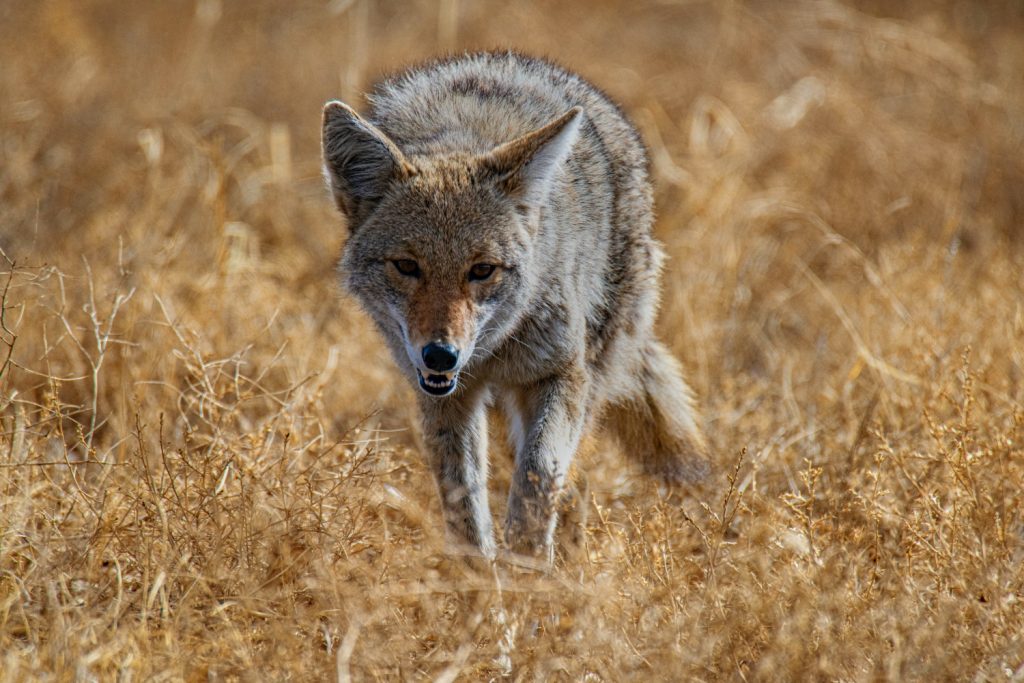
Predator urine
Use coyote urine to mark the perimeter of your garden. Remember, deer don’t like to linger in areas where predators have been. And even if there aren’t any predators in your vegetable patch, if you can convince deer that there are, you’ll be better able to protect your crops.
Now, granted, predator urine is gross. But desperate times call for desperate measures. While you may see using predator urine to defend your tomato plants as a last resort, don’t be so quick to knock this strategy. Predator urine is one of the most effective methods for repelling deer, and it also requires minimal effort on your part. Just be sure to wear long sleeves and gloves when applying the urine, for obvious reasons.

Red cat eyes
It’s estimated that the average mountain lion eats one deer every 6 to 12 days. And, what’s more, mountain lions have a successful kill rate of 82% when hunting deer, compared to the wolf’s 30%. If a deer finds itself in a mountain lion’s crosshairs, the odds are against it, and nobody is more aware of that fact than the deer themselves.
To keep deer out of your tomato plants and away from your crops, try installing a solar-powered cat eye light. If a deer spots these eyes glaring back at it from behind the bushes, it’s not likely to hang around for too long. Red cat eyes work very well for repelling deer, especially when used in combination with the other methods mentioned here. Just be sure to move the lights around every other day so deer don’t get used to them.
Garden netting
If you can’t repel the deer using the aforementioned methods, then you’ll have to physically prevent them from getting to your tomatoes. Arrange sturdy wooden stakes or T-posts around the edge of your garden, and tack up some heavy-duty garden netting. Most deer will give up trying to reach your plants after a few attempts at worming their way through the netting.
Garden netting is much less expensive than installing a proper fence. But because it’s made of plastic, it won’t last forever. Be sure to check the netting regularly for signs of wear, and patch up holes before any hungry animals can get in.
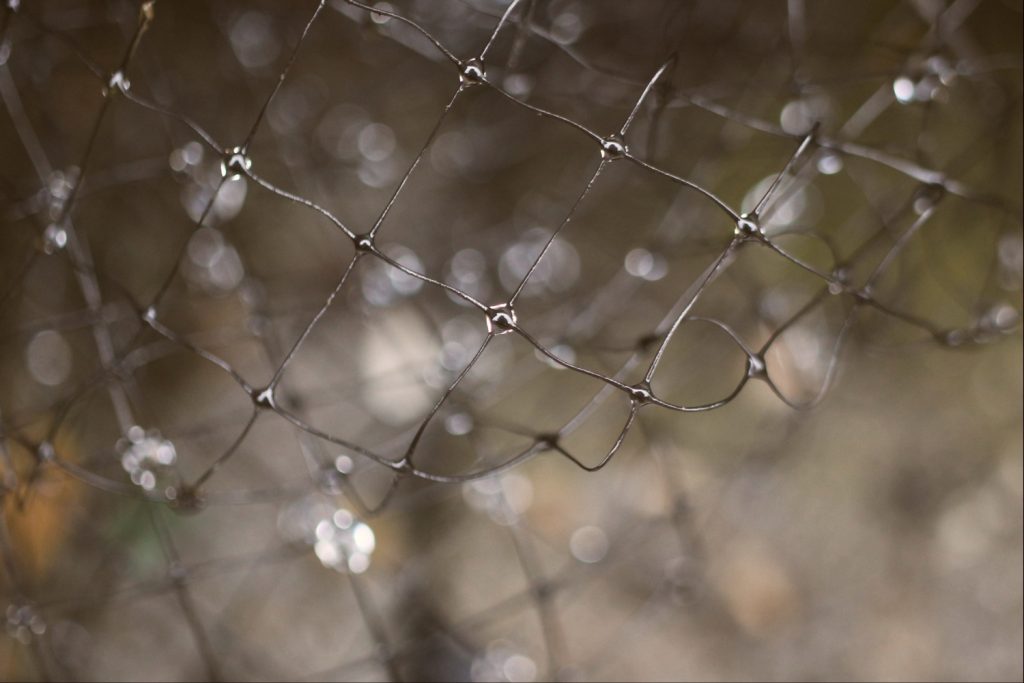
Tomato cages
The tomato cages you purchase from nurseries and garden supply centers may not be sturdy enough to keep deer from eating your tomatoes. But you can always construct your own. Start by driving 3 or 4 stakes around the outside of one of your tomato plants. Then, staple wire fencing to the stakes. Rabbit-proof wire works well for this because it’s flexible enough to work with, yet sturdy enough to keep deer out. Don’t forget to cut a round piece to go over the top of the cage to prevent deer from reaching in and eating the plants.
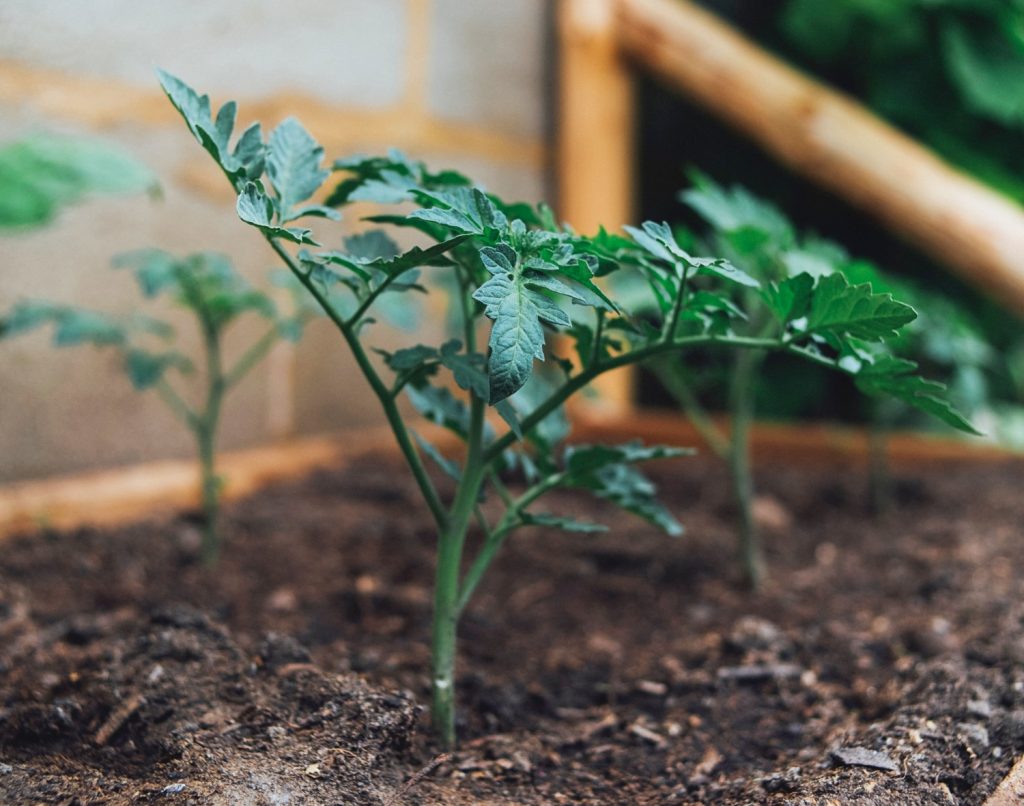
Fencing
If all else fails, then it’s time to think about putting up a fence. And, given that an adult deer can jump 7 feet up in the air from a standing position (8 to 12 feet if they get a running start), it’s going to have to be a tall one.
Use chain link fencing or sturdy wire panel to construct a tall fence around the perimeter of your garden. The fence should be 8 feet tall, preferably with the uppermost foot of fencing angling out away from the garden to break the deer’s momentum should it decide to try to jump in.
What else can you do to keep deer away from your tomatoes?
As prey animals, deer are acutely aware of what goes on in the world around them. They dislike commotion, and spontaneous movement makes them uneasy. So consider installing windchimes and whirligigs that move and make noise randomly, in a way that deer will never be able to figure out.
Visiting your garden regularly throughout the day will also discourage deer from lingering nearby. If you have dogs, take them with you. If deer see predators around your plants, they’ll be less likely to nose around them, even once they leave.
Deer love to eat tomatoes, that much is true. But with a few preventative measures, you can keep the deer out of your garden so you can enjoy the fruits of your tomato plants yourself come harvest time.
